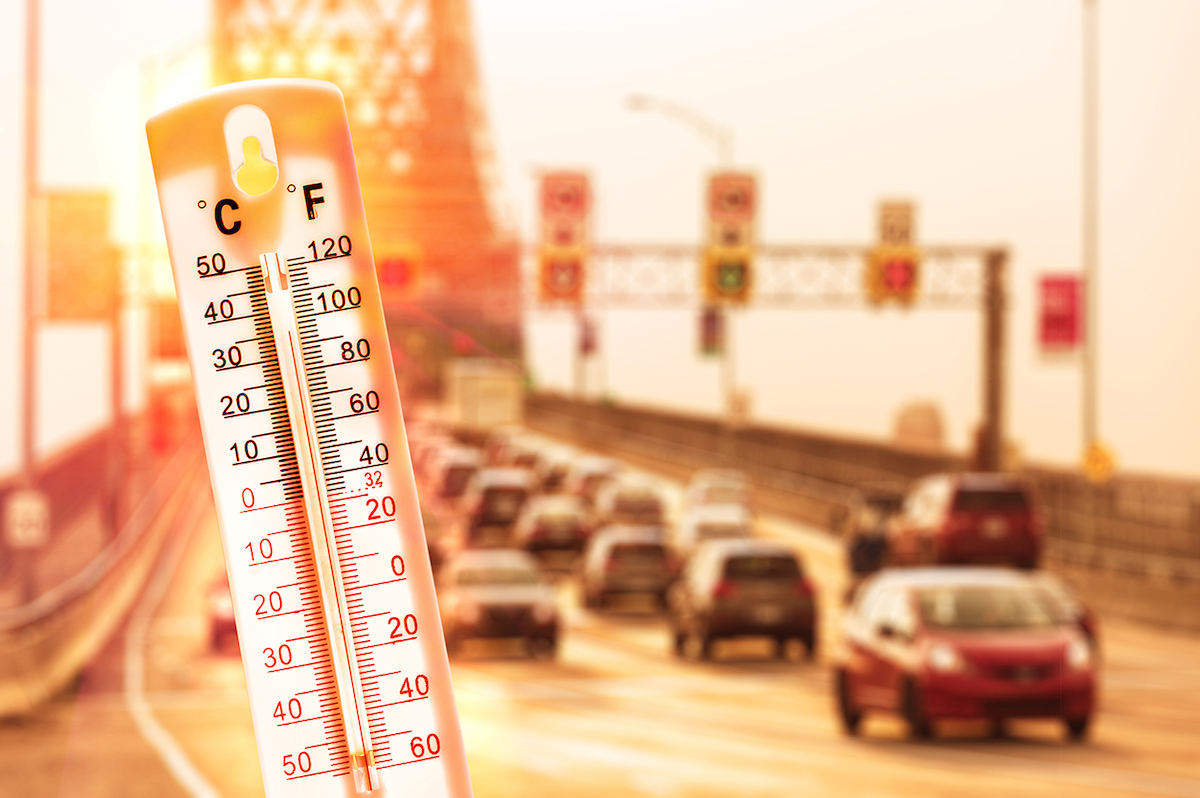The Odd Couple? Extreme Heat and Construction

Google the term “record temperature” in 2021 and you will find a swath of news about droughts and extreme heats sweeping across the country that are far from normal. 115 degrees in Portland, Oregon and 108 degrees in Seattle, Washington are hot even by Texas standards. Extreme heat poses unusual challenges that impact all phases of a construction project, from design through final completion. Some of these challenges may be managed by designing around them, others by contracting to accommodate them, and still others by training employees to deal with them. In this article, we examine how you can identify and manage the risk associated with extreme heat.
Standard of Care
Extreme hot weather in tandem with existing energy and other code requirements pose unique challenges for owners, developers and design professionals. While buildings and infrastructure can be designed to better withstand extreme weather events, those designs come with heftier price tags that may make the entire project uneconomical. Bringing the project within budget may require painful decisions about the project’s performance. While those decisions may not rise to the level of creating a health and safety hazard, they may make the project less resilient or more costly to repair after an extreme weather event.
From an owner’s or developer’s perspective, does reducing resiliency in order to maintain budget create legal liability to subsequent owners after extreme hot weather damages the project or reduces its revenue stream? From a designer’s perspective, do the increasing frequency, duration and prevalence of extreme hot weather events re-define the standard of care? The typical standard of care for engineers and architects is to perform their services with the professional skill and care ordinarily provided by other competent engineers or architects who practice under the same or similar circumstances and professional license. What exactly are the same or similar circumstances in a quickly evolving, changing climate?
Unfortunately, many parts of the design process, particularly the cost control measures implemented somewhere between design development and issue for construction documents are poorly documented. The poor documentation increases the potential risk for all participants—the owner, developer and designer—by not detailing the benefits, shortcomings and reasons for changing the design. With the added issues of extreme weather events, documenting the design considerations and the cost reduction measures throughout the design process assists the owners and developers in establishing that they made decisions with all the information in-hand and assists designers in showing that they met the minimum standard of care.
Construction Impacts
Extreme weather events also have significant impacts on the construction team. OSHA imposes a duty on employers to protect workers from recognized serious hazards in the workplace. High heat is one such hazard. OSHA has issued guidance for protecting workers exposed to high heat worksites that is the subject of another blog.
To implement OSHA’s recommendations or just prudent measures to protect workers, a contractor may incur additional time or cost. The contract should accommodate additional cost and time associated with weather impacts, specifically impacts for associated with extreme temperatures. Many contracts contain no damages for delay provisions and very restrictive weather-delay clauses that make it difficult or impossible for the contractor to recoup additional time or costs related to extreme weather events.
Extreme weather may also play havoc with the specified materials or manufacturers’ recommended installation guidelines. Many manufacturers include restrictions on temperature and humidity ranges during application and cure periods for their materials. Failure to adhere to the guidelines can result in product failure and/or the manufacturer refusing to issue a warranty. Either may breach the contractor’s obligations to the owner and result in claims for significant damages.
As with the design process, the contractor should document the extreme weather events and seek clarification from the owner and design professional as a means of risk management. For instance, if the temperature or humidity levels exceed the manufacturer’s recommendations, the contractor should consider sending a request for information to the owner and architect, seeking further instruction on how to proceed. The contractor should also consider submitting a proposed change order for delays or product changes associated with extreme heat.
While the extreme heat poses unusual challenges, there are techniques throughout the design and construction process that you can invoke to mitigate or minimize your risk. Our attorneys in Austin and Dallas are available to answer any questions you may have and to help you and your company best prepare for what’s ahead. Contact us at info@gstexlaw.com if you have any questions.
Legal Disclaimers
This blog is made available by Gerstle Snelson, LLP for educational purposes and to provide general information about the law, only. Neither this document nor the information contained in it is intended to constitute legal advice on any specific matter or of a general nature. Use of the blog does not create an attorney-client relationship with Gerstle Snelson, LLP where one does not already exist with the firm. This blog should not be used a substitute for competent legal advice from a licensed attorney.
©Gerstle Snelson, LLP 2021. All rights reserved. Any authorized reprint or use of this material is prohibited. No part of this blog may be reproduced or transmitted in any form or by any means, electronic or mechanical, including photocopying, recording, or by any information storage or retrieval system without the express written permission of Gerstle Snelson, LLP.

